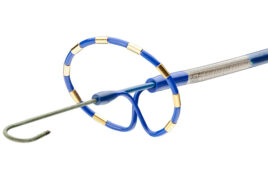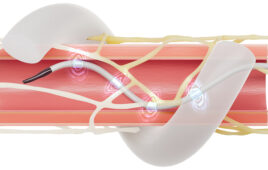The Sept. 24, 2016 Unique Device Identifier (UDI) compliance date for class II medical devices is quickly approaching. To assist device labelers through the UDI compliance process, Registrar Corp compiled a list of the top ten things to do to comply with the U.S. Food and Drug Administration’s (FDA) UDI requirements.
1. Determine the UDI compliance date for each device
Compliance dates for FDA’s UDI requirements are spread out over the course of six years and depend on a device’s classification. For most devices, the compliance date for direct marking is different than for the other requirements. It’s important to keep up with FDA’s extensions, as some compliance dates have changed since FDA issued its final rule. Registrar Corp stays up to date on FDA’s UDI regulations and can help device labelers determine the compliance date for a particular device.
![]() 2. Obtain a DUNS number
2. Obtain a DUNS number
All device labelers must obtain a Data Universal Numbering System (DUNS) number, as they are used to identify labeler organizations in GUDID. Labelers do not supply their name and address to the GUDID. This information is pulled from the DUNS database.
3. Obtain the GMDN term for devices
Device labelers are required to identify a Global Medical Device Nomenclature (GMDN) preferred term code for each device they submit to the GUDID. It’s prudent to identify a device’s GMDN code well before its compliance date, as it can take a substantial amount of time to obtain.
4. Calculate how many UDIs are needed
Each type of device and every version or model of each type of device will require a separate UDI. A different UDI is also needed for each size, color, material, style and package size of a single device type.
5. Obtain DIs from an FDA accredited issuing agency
Every UDI must contain a device identifier (DI). The DI portion of a UDI must be issued by an FDA accredited agency. There are currently three accredited issuing agencies to choose from: GS1 in New Jersey, HIBCC in Arizona and ICCBBA in California.
6. Select a PI
UDIs for all devices, except class I devices, must contain a production identifier (PI). The labeler can choose one or more of the following to make up the PI portion of a UDI:
- the lot or batch number
- the serial number
- the expiration date
- the date manufactured
- the distinct identification code for a human cell, tissue, or cellular and tissue-based product (HCT/P) regulated as a device
7. Decide how to submit data to the GUDID
Data can either be submitted to the GUDID through FDA’s web interface, which allows one submission at a time, or through the Health Level 7 (HL7) option, which allows multiple submissions at once. Labelers must complete testing using a GUDID test account to be able to submit through HL7.
8. Appoint a Regulatory Contact
Device companies must designate a Regulatory Contact for UDI and GUDID purposes. As a company’s Regulatory Contact, Registrar Corp will setup the company’s GUDID account, help determine the UDI requirements applicable to the company’s specific products and facilitate communication between FDA and the company.
9. Create a GUDID account
Once a labeler has decided how they will submit data to the GUDID, they should create the appropriate GUDID account. FDA encourages those who choose to submit through the web interface to familiarize themselves with the system by creating draft submissions. Drafts are not visible to FDA.
10. Organize device information and submit data to the GUDID
Labelers will need to gather various information about each device to enter into the GUDID, including the description of the devices, their DIs, their brand names, their version or model numbers, their GMDN codes, their FDA listing numbers and more.
Along with serving as a company’s Regulatory Contact, Registrar Corp can submit information to the GUDID on behalf of a device company. For questions regarding FDA’s UDI and GUDID regulations, contact Registrar Corp at +1-757-224-0177 or help is available 24-hours a day at www.registrarcorp.com/livehelp.




